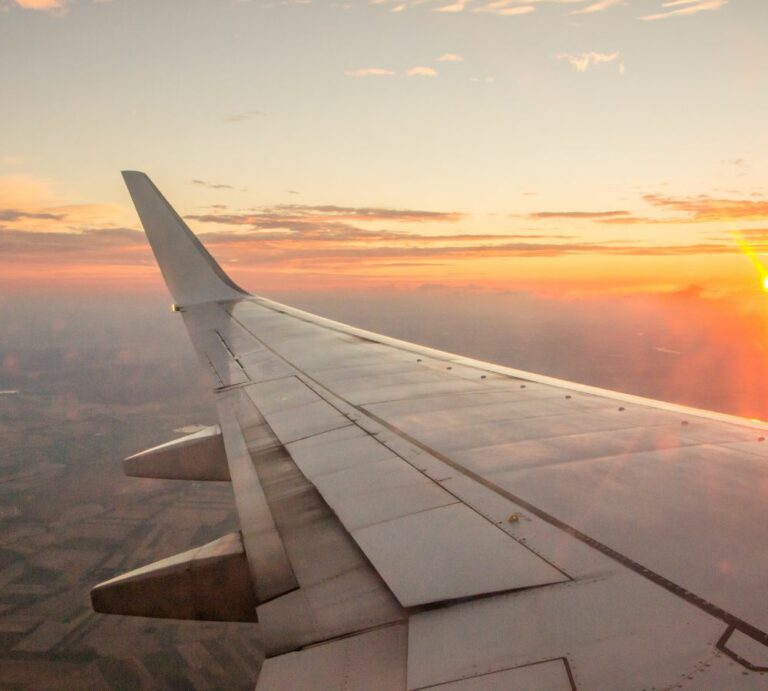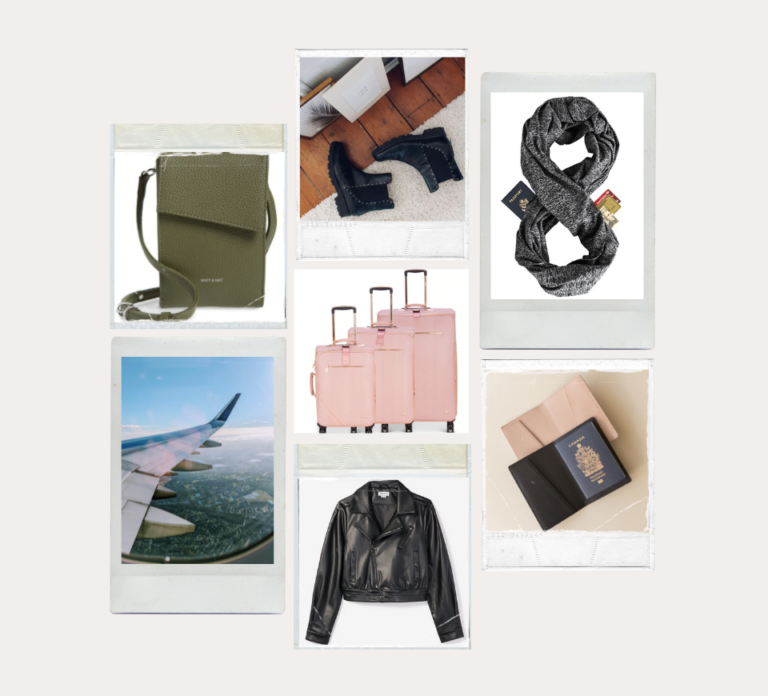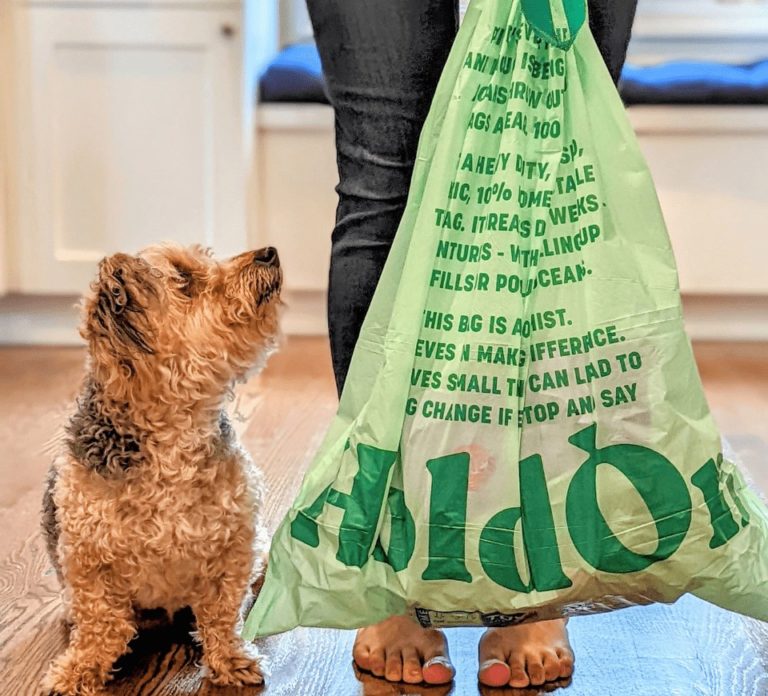8 Must-Know Tips for Flying with a Dog
Calvin and I are excited to welcome our special guest blogger, Roger Wellington, an ultra-bossy rescue Yorkshire Terrier from California who has been traveling the world since 2016. He teaches dog pawrents how to travel with their dogs and blogs about his nomadic canine life on Wet Nose Escapades: A Yorkie’s Guide to Healthy Dog Travel. To date, Roger W. has set his tiny furry paws on over 45 flights and countless trains across more than 20 countries.
WOOF, wanna fly with your dog? Traveling with your dog can be such a marvelous experience, but you must take precautions to ensure a safe and smooth journey, especially when it comes to air travel.
Without proper planning and preparation, air travel can be stressful or even traumatic for your dog — even if you land at your destination safely. As a world dog traveler who has been to countless dog-friendly cities in the US and abroad, I am excited to bark out 8 must-know tips for flying with a dog.
This article contains affiliate links (paid links) and Veggies Abroad is a member of Amazon Services LLC Associated Program. At no cost to you, I may earn a small commission if you make a purchase — this helps keep Veggies Abroad churning out free content! For an explanation of our advertising partnerships, please review our privacy policy.
The Most Important Things To Know When Flying with a Dog
#1 Choose a pet-friendly airline
In the world of dog travel, not all airlines are created equal. Some airlines will not fly dogs, whereas others will only fly them via cargo for an exorbitant fee. In the past, my humans have gotten excited over a cheap flight only to find out that the airline prohibits dogs onboard.
If you have a small dog (say under 16 pounds), then you should find an airline that allows dogs to fly in-cabin. As a dog traveler who has never left his humans’ side on a plane, I would only recommend air travel with your dog in-cabin, where you can keep an eye on him or her at all times. Unless you have no choice but to bring your dog along (a permanent or long-term move), cargo transport is usually a NO GO.
#2 Make a flight reservation with your dog as soon as possible
After confirming your flight, you must add your dog traveler to your reservation as soon as possible unless you could do so online at the time of booking. As most airlines only allow up to two pets or non-service dogs to fly in-cabin, you must act immediately.
In the U.S., dog travel fees may range anywhere from $100 to $200 one-way, depending on the destination. They’re either collected at the time of booking or counter check-in.
#3 Find the right carrier
Finding the right carrier is crucial to a comfortable and safe journey for your furry traveler. Transporting your dog in the wrong carrier not only creates discomfort for your dog but can also be life-threatening.
The most common dimensions for an airline-approved pet carrier are 17 inches by 11 inches by 11 inches. However, since every airline may have slightly different requirements for a pet carrier, please check their website for the exact dimensions for onboard approval.
Also, some airlines may impose a combined weight allowance for both the carrier and your dog, typically at 20 pounds. Sniff out my expert tips on how to find the best carrier for your dog.
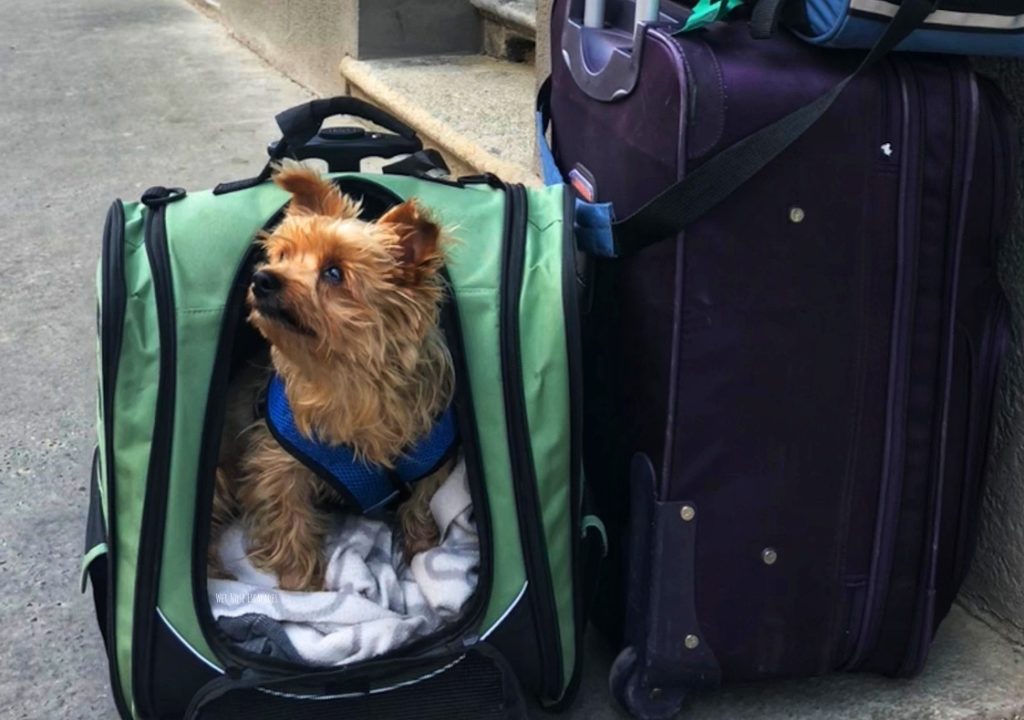
#4 Start carrier training in advance
Carrier training is the most important step in flying with your dog. This step takes patience, time, and lots of treats. Unless your dog is a seasoned traveler like me, you should invest at least two months in carrier training before your dog’s very first flight.
Be sure to put your dog’s favorite toys and treats inside the carrier to entice him to go in to take a sniff. Start slowly with a few minutes a day of having your dog explore the carrier and then gradually zip it up.
Depending on the duration of the flight, you’ll want to train him to feel comfortable inside for at least an hour before the actual flight. The more relaxed your dog can feel inside the carrier, the better he’ll be on the flight.
#5 Plan out meals and potty breaks
Just as you probably wouldn’t scarf down a big meal or down a bottle of water right before flying, your dog shouldn’t either. GRR, at least humans get access to a bathroom on the plane regardless of how tiny it can be.
Although accidents may still happen even with advanced carrier training, you can help your dog minimize the chances of accidents on the plane by strategically planning out his meals and potty breaks.
I suggest feeding your dog at least two hours before heading to the airport, which provides your dog enough time for digestion and relief. Feeding him too close to the flight time could cause discomfort or a stomachache, especially if your dog is prone to motion sickness.
#6 Exhaust your dog’s energy before the flight
To ensure a smooth journey for your dog, you’ll want to tire him out before the flight. If your dog can sleep like a baby on the plane, then all is well. I’m not suggesting that you force your dog to run a marathon or do anything extreme (that would be cruel) but tacking on an extra 15-20 minutes to the walk or playtime can do the trick.
Of course, this ultimately depends on your dog’s health and physical capability. If you have an older dog like me, be sure to sniff out my 25 tips on flying with a senior dog.
#7 Get to the airport extra early
When I bark “extra” early, I mean at least an extra hour than you normally would if you are flying solo. In addition to providing your dog with a potty break before and after checking in at the counter, getting to the airport earlier will be beneficial in resolving any potential carrier or paperwork issue.
For a flight from Amsterdam to Stockholm, the airline check-in staff said my carrier was deemed unacceptable. Subsequently, my humans frantically started swapping me out to another carrier with different dimensions.
Another time, when I was flying from Los Angeles to Rome, the staff took a whoppin’ 20 minutes to review my paperwork, making photocopies of my Pet Passport and several calls to upper management. The reason for the holdup? I have no idea. Unfortunately, the issues that can arise at check-in with your dog can be endless.
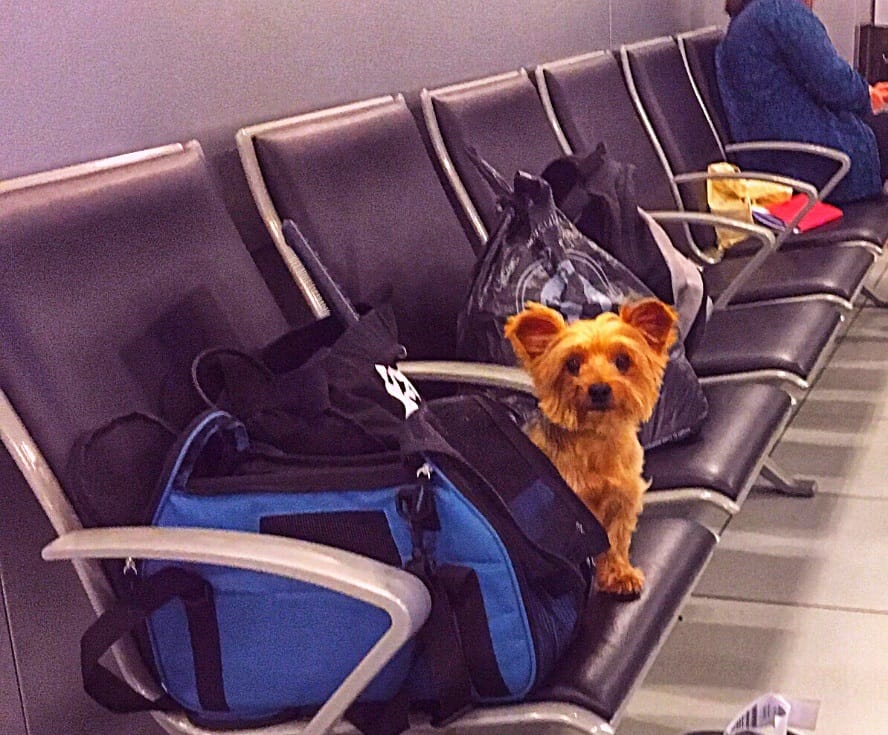
#8 Prepare for accidents
After five years of marking up the globe with over 45 flights under my belt, I can bark loudly with an upright tail that I’ve never had a single accident on the plane (nor have I made a peep but have woken up many times by screaming, snot-shooting babies). Paws crossed that I continue to uphold my record!
However, it’s not logical to expect your dog to hold it indefinitely, even if he is a seasoned traveler like me. Expect accidents to happen from time to time. Think about it — what if unforeseen weather conditions cause an unexpected layover or return to the originating airport?
At 35,000 feet in the air, you can control very little. Hence, all you can do is to stay prepared for any accidents. Besides putting a pee pad inside the carrier, you should have dog wipes and human antibacterial wipes handy for easy cleaning.
WOOF, I hope you have a safe flight with your dog! Put a furry paw here for more tips on traveling with your dog.



